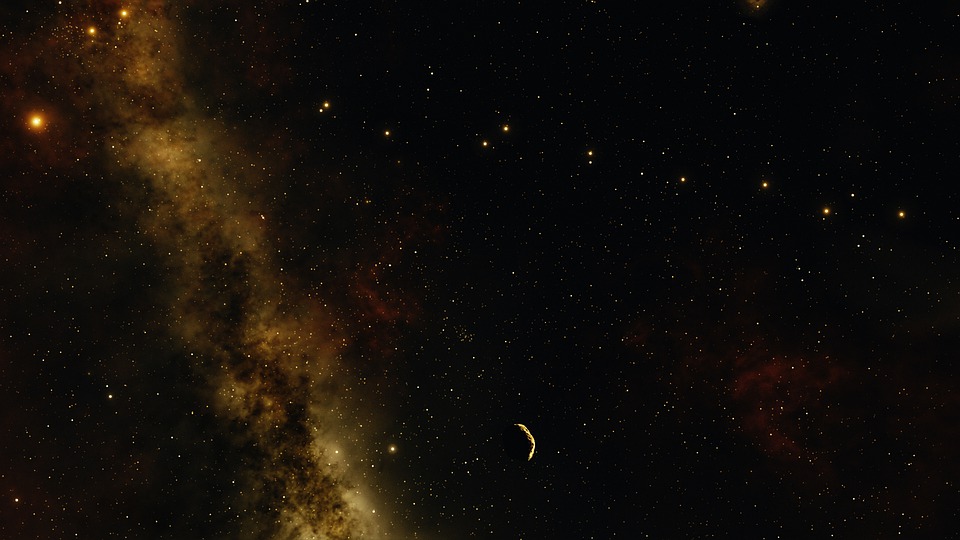Although the actual chances of getting struck by an asteroid are very slim, there is still that possibility which is why space agencies like NASA are keeping a close watch on what is happening out in space. However, there are asteroids that may come in and collide with Earth without warning, and astronaut Paolo Nespoli from the European Space Agency has warned that there may be many that could do so.
Nespoli shared this ominous possibility over on Twitter, saying that there are around a million asteroids traveling through space and the solar system all of which have a possibility of colliding with our planet. Nespoli noted that even though there are much smaller asteroids that could simply burn up when in contact with the Earth’s atmosphere, there are much larger asteroids that are similar to the rock that caused the mass extinction of the dinosaurs millions of years ago.
“Between small and big, there are 1 million asteroids out there that could hit the Earth. Right now, we are mostly ignoring the possibility of a massive one suddenly appearing. It’s time to act,” tweeted the astronaut.
Fortunately, agencies like NASA and the ESA have already gone ahead to identify and factor in all the asteroids that are deemed Potentially Hazardous. As of now, 90 percent have been accounted for by NASA. That being said, agencies have also developed plans to keep the Earth from getting hit by asteroids. One such asteroid that NASA is keeping tabs on is Bennu, however, the agency has stressed that this particular rock will most likely collide with Venus rather than Earth.
Meanwhile, back in June, residents on the east coast in the United States witnessed a fireball in the skies. The International Meteor Organization or IMO shortly received 120 reports of this sighting, with some saying that it was the best thing they have seen.
Asteroids or meteors that burn up upon contact with the atmosphere produce a very bright explosion. This is because this would be the first time a space rock has met resistance. Air would seep into the cracks and crevices of the rock, causing it to burst and explode.



 SpaceX’s Starship Completes 11th Test Flight, Paving Way for Moon and Mars Missions
SpaceX’s Starship Completes 11th Test Flight, Paving Way for Moon and Mars Missions  SpaceX Starship Test Flight Reaches New Heights but Ends in Setback
SpaceX Starship Test Flight Reaches New Heights but Ends in Setback  Trump Signs Executive Order to Boost AI Research in Childhood Cancer
Trump Signs Executive Order to Boost AI Research in Childhood Cancer  Is space worth the cost? Accounting experts say its value can’t be found in spreadsheets
Is space worth the cost? Accounting experts say its value can’t be found in spreadsheets  Neuren Pharmaceuticals Surges on U.S. Patent Win for Rare Disorder Drug
Neuren Pharmaceuticals Surges on U.S. Patent Win for Rare Disorder Drug  NASA Cuts Boeing Starliner Missions as SpaceX Pulls Ahead
NASA Cuts Boeing Starliner Missions as SpaceX Pulls Ahead  CDC Vaccine Review Sparks Controversy Over Thimerosal Study Citation
CDC Vaccine Review Sparks Controversy Over Thimerosal Study Citation  Ancient Mars may have had a carbon cycle − a new study suggests the red planet may have once been warmer, wetter and more favorable for life
Ancient Mars may have had a carbon cycle − a new study suggests the red planet may have once been warmer, wetter and more favorable for life  Blue Origin’s New Glenn Achieves Breakthrough Success With First NASA Mission
Blue Origin’s New Glenn Achieves Breakthrough Success With First NASA Mission  Trump Administration to Launch Autism Initiatives Targeting Acetaminophen Use and New Treatment Options
Trump Administration to Launch Autism Initiatives Targeting Acetaminophen Use and New Treatment Options  NASA Astronauts Wilmore and Williams Recover After Boeing Starliner Delay
NASA Astronauts Wilmore and Williams Recover After Boeing Starliner Delay  Lost in space: MethaneSat failed just as NZ was to take over mission control – here’s what we need to know now
Lost in space: MethaneSat failed just as NZ was to take over mission control – here’s what we need to know now  Astronomers have discovered another puzzling interstellar object − this third one is big, bright and fast
Astronomers have discovered another puzzling interstellar object − this third one is big, bright and fast  Cogent Biosciences Soars 120% on Breakthrough Phase 3 Results for Bezuclastinib in GIST Treatment
Cogent Biosciences Soars 120% on Breakthrough Phase 3 Results for Bezuclastinib in GIST Treatment 































